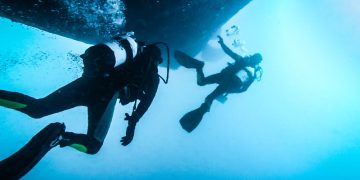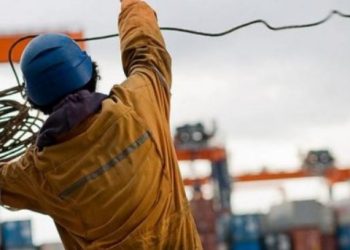The National Transportation Safety Board (NTSB) has released its Safer Seas Digest 2024, highlighting the most important lessons learned from 34 maritime casualties that took place in 2024.
Safer Seas Digest 2024 detailed the facts and analyzed the probable causes of maritime casualties, including capsizings, collisions, contacts, fires, floodings, groundings and machinery damage.
In addition, it highlights the marine safety issue of safety management systems, or SMSs, for passenger vessels, a safety issue that the NTSB has identified in numerous marine investigations.
According to the NTSB Office of Marine Safety (OMS) the most prominent issues included the following:
- Capsizing/Listing
- Collision
- Contact
- Fire/Explosion
- Flooding/Hull Failure
- Grounding/Stranding
- Machinery Damage
Lessons learned
#1 Providing Adequate Procedures and Training
Improper operation of equipment, poor planning, and ineffective action to prevent or mitigate an emergency can often be traced to the absence of adequate procedures or training. Safe vessel operations and compliance with mandatory rules and regulations can be achieved in part by vessel owners and operators establishing clear standard operating and emergency response procedures—as found in an effective SMS. Manufacturer guidance and industry standards can provide practiced and proven methods for properly and safely completing tasks with minimal risk to the vessel. Once procedures have been implemented, owners and operators should ensure crewmembers and personnel involved in operations are thoroughly trained in and adhere to the procedures. By actively ensuring procedures are established and followed, owners and operators can identify and correct nonconformities and take steps to mitigate future risks.
#2 Determining Adequate Staffing
The composition of a vessel’s crew may vary based on the complexity of operations. Typically, maneuvers like docking or undocking, transiting in or out of port, or operating in areas of high traffic density require additional bridge personnel to handle navigation-related duties. Fewer crewmembers may be required when a vessel is docked, but an appropriate number must remain on board to ensure the safety and security aboard the vessel. Owners, operators, and vessel captains are responsible for ensuring that crews are staffed with a sufficient number of properly trained and/or credentialed mariners who are familiar with critical vessel systems and able to independently take immediate action.
#3 Maintaining Alertness and Vigilance
Fatigue and complacency can both affect mariners’ ability to remain alert and vigilant. Fatigue impacts all aspects of human performance—including decision-making, alertness, and reaction time—all of which affect a mariner’s ability to safely navigate a vessel. Additionally, the impacts of awake/sleep cycle disturbances can be reduced by using tools such as pilothouse alerter systems and by allowing longer downtime between watches/shifts. It is important that mariners get enough sleep during each off-watch period, so they remain alert when assuming watch. Repetition and monotony can also cause even the most experienced and skilled mariner to become complacent and lose situational awareness. It is also good practice to develop strategies that help mariners maintain focus, such as changing position, eliminating distractions, and continuous scanning of instruments.
#4 Maintaining Unimpeded Return Flow in Diesel Engine Fuel Oil Return Systems
Diesel engine fuel return systems are designed to return unburned, excess fuel from an engine back to a designated tank, typically at atmospheric pressure. If an isolation (shutoff) valve is installed in the return line before the tank, closing the valve will result in a pressure build up in the return line. Pressure can build up in a closed return line such that the fuel system components rupture, causing fuel to spray into the engine room and possibly ignite a fire. Vessel owners and operators can mitigate the risk of engine room fires resulting from overpressurization by ensuring return lines leading to service tanks are unimpeded.
#5 Mitigating Fire Risks
Fire aboard a vessel—no matter the cause—is an emergency situation with potentially disastrous consequences. To mitigate the risk of fire, mariners and other personnel should follow standard industry practice, company policies (often contained in an SMS), and manufacturer guidance when conducting maintenance work (such as hot work) and handling open-flame devices. Ensuring fire detection and notification systems are functional once work is completed can help detect fires early before they grow. When a fire is detected, mariners can limit its spread by securing ventilation; activating fixed fire extinguishing systems, where installed; and ensuring the appropriate response activities occur. Additionally, owners and operators can mitigate the risk of fire spreading by limiting the use and storage of combustible materials—such as wood paneling, candles, or chafing fuel canisters—aboard a vessel.
#6 Ensuring Watertight Integrity
To prevent vessel flooding, the integrity of the hull and watertight bulkheads must be maintained, and any deficiencies must be appropriately addressed. Conducting periodic rounds of vessel spaces and regularly checking tanks and voids adjacent to the vessel’s hull can help crews identify hull integrity issues that can possibly lead to flooding. Addressing known issues with watertight integrity—including unsealed watertight bulkheads, unsealed deck penetrations, and deck and hull plate wastage—by permanent means can help mitigate the risk of a vessel flooding. Additionally, when a vessel is unattended, closing through-hull fitting valves and tightening packing glands for propulsion shaft seals or other machinery can reduce the potential for flooding.
#7 Installing and Testing Bilge Alarms
Automatic high-water bilge alarms are intended to provide crews with an early warning of vessel flooding. In inaccessible spaces or small spaces with limited ability to inspect while underway (such as smaller compartments, voids, or a lazarette), these alarms are often the sole means to alert vessel crews of flooding. Owners and operators should install bilge high-water sensors in all spaces where flooding may have a significant effect on the vessel’s stability and buoyancy and periodically test the alarms.
#8 Preventing Hull Corrosion
Because of exposure to environmental conditions, steel hulls are susceptible to corrosion, erosion, and damage over time. Corrosion can also grow undetected in inaccessible voids or difficult-to-reach pockets. To avoid flooding or weakening of the hull due to corrosion or other factors, it is good marine practice for owners to conduct regular oversight and maintenance of hulls, including between drydock periods. Additionally, when designing, constructing, or modifying a vessel, designers, manufacturers, and operators should ensure all spaces are accessible so maintenance personnel can check for and address potential issues.
#9 Accounting for Hydrodynamic Forces
In narrow channels, hydrodynamic forces reduce rudder effectiveness (squat and shallow water effect) and yaw the bow away from the closest bank and pull the stern in (bank effect). Bank effect can have an undesired effect on vessels, even for the most experienced shiphandlers; pilots, masters, and other vessel operators should be aware of the risks in areas known for hydrodynamic forces. Additionally, as a large ship moves through a channel, a low-pressure suction is particularly strong on the vessel’s quarters near the inlet side of the propeller. If a small vessel must operate near a larger vessel—such as a tugboat conducting harbor-assist operations for a ship—the operator of the smaller vessel should be aware of the hazards caused by hydrodynamic forces due to the larger vessel, and, if necessary, maintain a safe distance until the larger vessel slows and the hydrodynamic forces are reduced.
#10 Planning for Current






























































